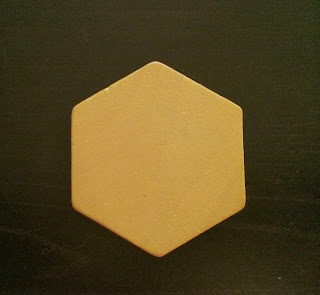· This is a two-day activity that uses a real-life
situation of having to share submarine sandwiches fairly among students on a
field trip. The first day is used to
allow the students to work in pairs to figure out how much of each sandwich
each student would get given various numbers of students and sandwiches. Students are then asked to create posters
illustrating their strategies for figuring out how much each student would get
that are then shared with the rest of the class on day two. Examples of common strategies and
misconceptions are provided as well as helpful tips for teachers to stimulate
and guide discussion throughout the two days.
Teaching Activities:
Everyday QuestionsAn easy way to help students gain familiarity with rational numbers is to ask them different questions using rational numbers throughout the day. Here are some examples of questions you could ask students or tasks you might have them perform to help personalize rational numbers.
Dividing Fractions with Pattern Blocks
Slide 34 mentions using pattern blocks to help students understand division with fractions. Here is a sample activity illustrating what this might look like. You can also click here for a sample lesson and links to several resources related to teaching division of fractions using pattern blocks.
You can also use the pattern blocks to change the size of the unit whole (use two yellow hexagons or a yellow hexagon and a red trapezoid to make a unit whole).
Other Resources:
NAEP site - http://nces.ed.gov/nationsreportcard/
o An
overview of the assessment and its purpose
Everyday QuestionsAn easy way to help students gain familiarity with rational numbers is to ask them different questions using rational numbers throughout the day. Here are some examples of questions you could ask students or tasks you might have them perform to help personalize rational numbers.
- Leave early for lunch and have students estimate half of the distance from the classroom to the cafeteria. Have students stop when they think they've gone halfway. Mark this distance with tape. On the next trip work together as a class to find the actual halfway point is. You can extend this activity by estimating 1/3 of the distance or 1/4 and then again measure the distances.
- Ask students to find a certain fraction of the classroom, area of the classroom, number of desks, etc. "What would 1/4 of the classroom look like?"
Dividing Fractions with Pattern Blocks
Slide 34 mentions using pattern blocks to help students understand division with fractions. Here is a sample activity illustrating what this might look like. You can also click here for a sample lesson and links to several resources related to teaching division of fractions using pattern blocks.
- Using the yellow hexagon as 1 whole, write the equation 1 divided by 1/2.
- Ask students to find the pattern block that represents 1/2 of the yellow hexagon.
- Ask students how many halves (red trapezoids) are needed to make or to cover 1 whole ( a yellow hexagon).
- They will see that it takes 2 halves (two red trapezoids) to make 1 whole (a yellow hexagon). Thus 1 divided by 1/2 is equal to 2.
- You can repeat this process using fractional pieces of the same unit whole (2/3 divided by 1/2).
You can also use the pattern blocks to change the size of the unit whole (use two yellow hexagons or a yellow hexagon and a red trapezoid to make a unit whole).
Other Resources:
NAEP site - http://nces.ed.gov/nationsreportcard/
· This is the home site for the National
Assessment of Educational Progress (NAEP) which is the assessment used for
comparing academic progress in the United States to other countries. Resources available through this site
include:
o Specific
information for parents, students, researchers, media, educators, and
participating schools
participating schools
o Information
about specific content areas assessed using the NAEP test
o Information
about results (recent results as well as trends in progress over time)
o Links
to studies and surveys using NAEP data
o Sample
items








No comments:
Post a Comment